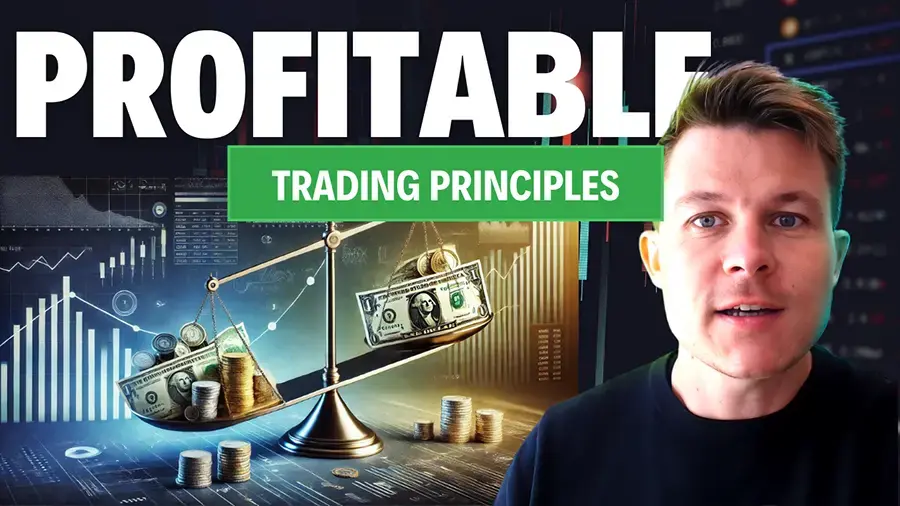3 min read
Scientist Discovered Why Most Traders Lose Money – 24 Surprising Statistics
“95% of all traders fail” is the most commonly used trading related statistic around the internet. But no research paper exists that proves this...
Do you want to become a successful trader? It's not about winning every trade. It's about having a trading strategy that works for you in the long run and start thinking in terms of probabilities. This article will introduce you to the trifecta of profitable trading: Risk-Reward Ratio (RRR), Win Rate (WR), and Risk Management, and we explore how they work together.
The Reward-Risk-Ratio is all about balancing your potential profits with potential losses. Imagine this: if you risk $100 to make $200, your RRR is 2:1. This means your winning trades are twice the size of your losing trades.
Generally, a higher RRR is better. But there's a catch! Trying to chase big wins often means sacrificing your win rate. The market won't give you long trends and huge wins all the time. So, focusing solely on big wins can lead to more losses and break-even trades.
The most important point is that with a good RRR, you can win less than half the time and still be profitable. Let's break it down with an example:
Example: Your RRR is 2:1 (win twice what you lose).
You win $200 on a trade and lose $100 on another.
Out of your next 6 trades, you win 3 ($600 profit) and lose 3 ($400 loss).
Even though you only won 3 out of 6 trades (50% win rate), you end up with a profit because of your RRR. This means with a 2:1 RRR, you can make money with a 50% winrate.
Remember: Don't get caught up in chasing a high win rate. Focus on building a strategy with a good RRR that allows you to be profitable even with an average win rate.
Win rate is simply the percentage of trades you win. While a high win rate might seem ideal, many professional traders win around 50% of the time, or even less! Here's why:
Pros focus on RRR, not WR: They understand they don't need to win all the time to make money. They focus on making their wins bigger than their losses.
High WR chase is a recipe for disaster: Trying to avoid losses at all costs can lead to bad decisions, like revenge trading or holding onto losing trades. This can wreck your trading career.
Focus on taking losses effectively. Learn to manage your emotions and stick to your trading plan. This will help you avoid the common mistakes traders make when faced with losses.
Risk management is the final piece of the profitable trading trifecta. Even with a good RRR and WR, you can still lose money if you don't manage your risk properly.
Position Sizing is Key: A position sizing strategy limits how much you risk on each trade. A common approach is to risk a fixed percentage (1-2%) of your capital per trade. This protects your account from a single bad trade wiping you out.
Avoiding large losses is crucial. They can damage your trading account and your mental state. Recovering from a loss of confidence is often harder than recovering from a financial loss.
By following the trifecta of profitable trading, you can develop a strategy that sets you up for long-term success.
Remember:
You won't win every trade, so learn to take losses effectively.
A good RRR is more important than a high win rate. Don't chase home runs.
Stop obsessing about your win rate. Focus on building a strategy with a good RRR.
Implement a position sizing strategy to avoid large losses.
This is just the beginning of your trading journey. By focusing on these core principles, you'll be well on your way to becoming a profitable trader.

3 min read
“95% of all traders fail” is the most commonly used trading related statistic around the internet. But no research paper exists that proves this...

3 min read
Trendlines can be great trading tools if used correctly and in this post, I am going to share three powerful trendline strategies with you.

3 min read
Choosing the right trading journal is essential for traders wanting to analyze performance, refine strategies, and improve consistency. In this...
